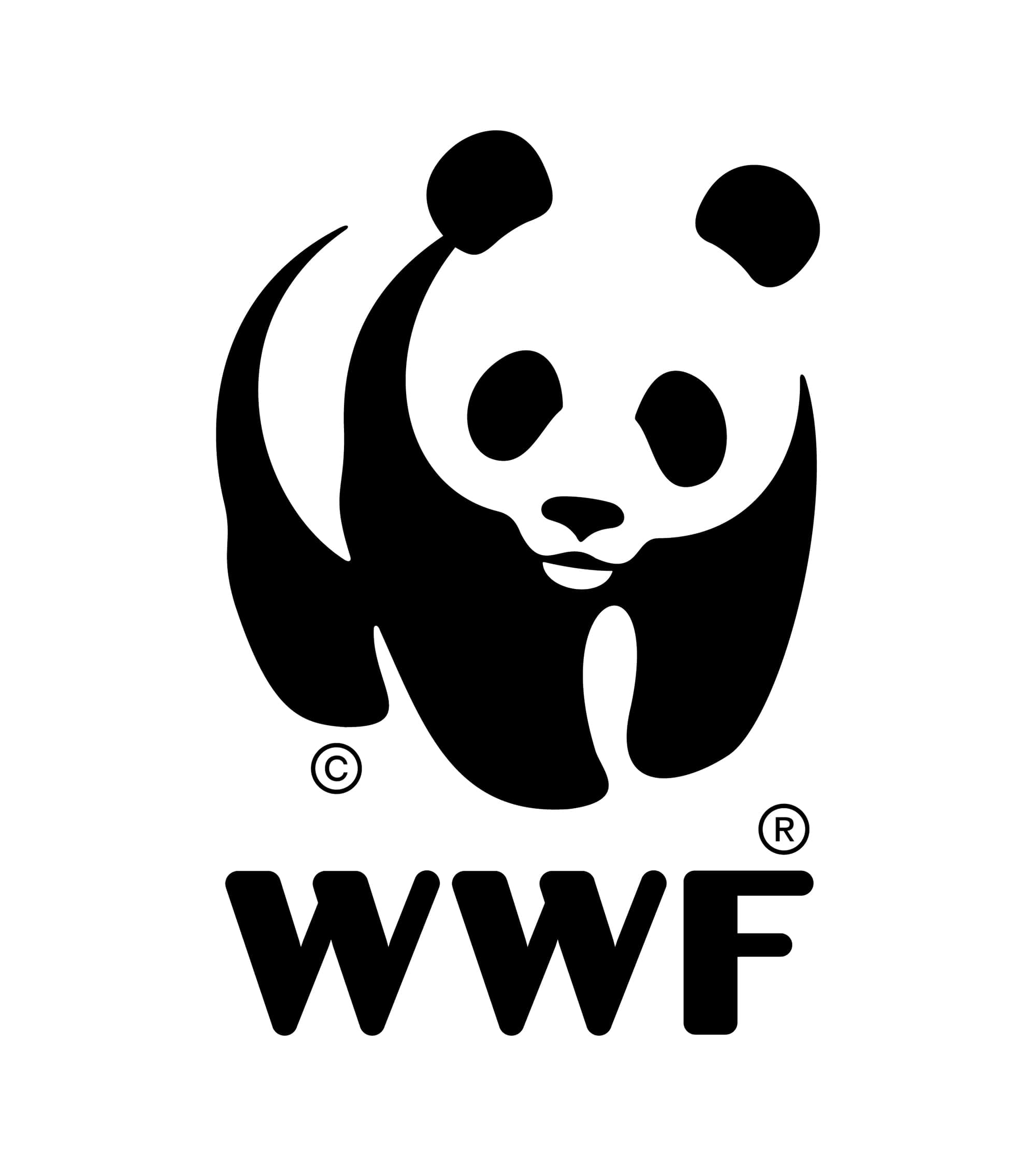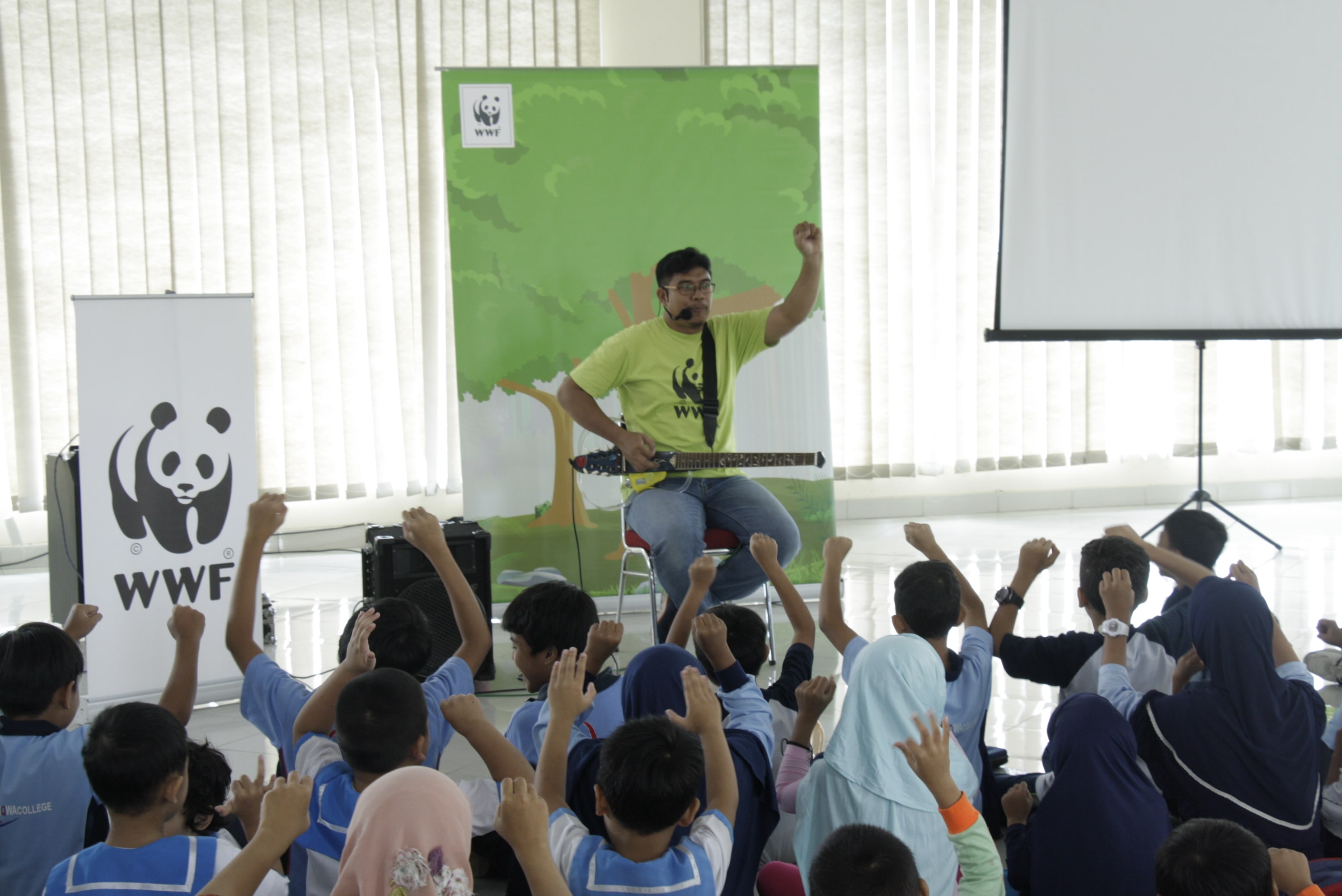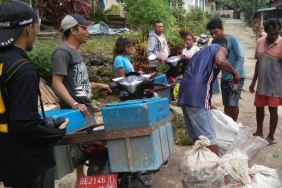PANDA MOBILE INTRODUCES UMBRELLA SPECIES TO TUNAS MUDA STUDENTS, KEDOYA
By: Berthi D. Arebo & Inayah/WWF-Indonesia
The potential of natural resources in Teluk Bintuni Regency, especially mangrove forests, undoubtedly provides many benefits for the existence of biota with important economic value. A survey conducted by WWF-Indonesia as the implementing partner of the USAID Sustainable Ecosystems Advanced (USAID SEA) Project in August 2017 in Bintuni Bay identified three main types of fishery commodities, namely shrimp (Penaeidae), mud crabs (Geryonidae) and snapper (Scianidae). All three are export targets which each year make a major contribution to the fishery production of Teluk Bintuni Regency. Fishery production in 2007 amounted to 2,021 tons, increasing to 2,869 tons in 2016, consisting of 46% shrimp, 18% crab and 15% snapper.
Along with its development, various threats to fishery activities began to appear, either directly or indirectly. The real threat is stock depletion due to overfishing, especially for key commodities. "In the past, catching crabs and shrimp was not that far away and didn't take a long time at sea, but now it's the other way around. Crab and shrimp have begun to feel that their catches are decreasing and their sizes are getting smaller," emphasized Doweeks Pigo, a member of the Kuri tribe.
In addition, pressure has also occurred on several species of sharks that used to be frequently caught by fishermen, especially the saw shark (Pristis microdon). Fishermen say they almost never encounter saw sharks during fishing activities. The results of field identification conducted by WWF-Indonesia through the USAID SEA Project, found at least around 3 types of sharks in one fishing activity, one of which is the hammerhead shark. Unfortunately, the caught species are also targeted for trade. Another threat felt by the community is the existence of oil and gas exploration and exploitation activities which have an impact on the boundaries of the fishing areas of fishermen in Bintuni Bay.
In line with that, WWF-Indonesia with the support of the USAID SEA Project is trying to encourage fisheries management by prioritizing the direct participation of indigenous peoples. Based on the issues and problems, the most suitable management concept applied in Bintuni Bay is "Traditional Community-Based Fishery Management". Of course, this concept must be carried out collaboratively and participatively. Considering that Teluk Bintuni Regency has seven major tribes that quite exist (Kuri, Wamesa, Sough, Irarutu, Sebyar, Moskona, and Sumuri.) where their presence has great potential as area managers, especially in the context of customary regulations.
In the Cross-Customary Meeting (28/1) community representatives from 7 major tribes in Bintuni Bay agreed to form a Traditional Community-Based Fisheries Management Initiative Team. The team or also as a working group (Pokja), will be responsible for developing the concept of Traditional Community-Based Fisheries Management in Bintuni Bay. "The concept of Traditional Community-Based Fisheries Management that will be implemented in Bintuni Bay is none other than to develop traditional or customary rules regarding fisheries so that they are implemented formally and of course the community itself proposes, compiles, implements and evaluates them," added the Head of the Fisheries Service Teluk Bintuni Regency, Ahmad Anwar Bauw.
In its implementation, Traditional Community-Based Fisheries Management requires Management Units which are Indigenous Peoples (MHA) and whose existence has been recognized. This Management Unit will be responsible for managing and implementing management programs included in the Traditional Community-Based Fisheries Management scheme. In line with the Regulation of the Minister of Maritime Affairs and Fisheries Number PER.8/MEN/2018 concerning Procedures for Designating Customary Law Community Management Areas in the Utilization of Space in Coastal Areas and Small Islands, to manage marine space there needs to be recognition of MHA as the management unit. In Bintuni Bay, the Regional Regulation (Perda) regarding Recognition of the 7 Major Tribes of Bintuni Bay is currently in the legalization stage. Toni Urbon as an Indigenous Leader of the Bintuni Bay revealed that "The Regional Regulation on the Recognition of the 7 major Indigenous Peoples of the Bintuni Bay has been discussed at the Legal Bureau since December 18 2018. When the Regional Regulation has been passed, the 7 major ethnic groups will have the sovereignty to manage coastal and marine potential." follow Up Traditional Community-Based Fisheries Management in Bintuni Bay.
Implementing Traditional Community-Based Fisheries Management in Bintuni Bay is not as easy as one might think. Bearing in mind that the waters of Bintuni Bay have many coastal managers and their fishing activities are already massive, it is necessary to carry out intense socialization and public consultation so that the community and managers of the coastal areas understand well the purpose of establishing Traditional Community-Based Fisheries Management. "Our people in Bintuni Bay are quite open. If we always meet with them to convey good intentions, we are sure they will accept them and will help process after process. We also need to sit down with village-level figures to ask for their opinion so that the concept of Traditional Community-Based Fisheries Management can be implemented as expected," added Okto Merani, one of the Indigenous Leaders in Bintuni Bay.
Community capacity building as actors or direct users of fisheries potential also needs to be improved, not only for local communities but also for non-local communities. "The fishery management that will be implemented later must be strictly obeyed by all fishing communities, especially those using fairly modern fishing gear and large boats. So that fish, prawns and crabs will still be enjoyed by our future generations," added Sarce Wanoy, one of the women leaders of the Wamesa tribe. It is hoped that with an area of 66,921 Ha of waters allocated in the Zoning Plan for Coastal Areas and Small Islands (RZWP-3-K) of West Papua Province as a Conservation area, it can be managed properly by the community through the concept of Traditional Community-Based Fisheries Management.





